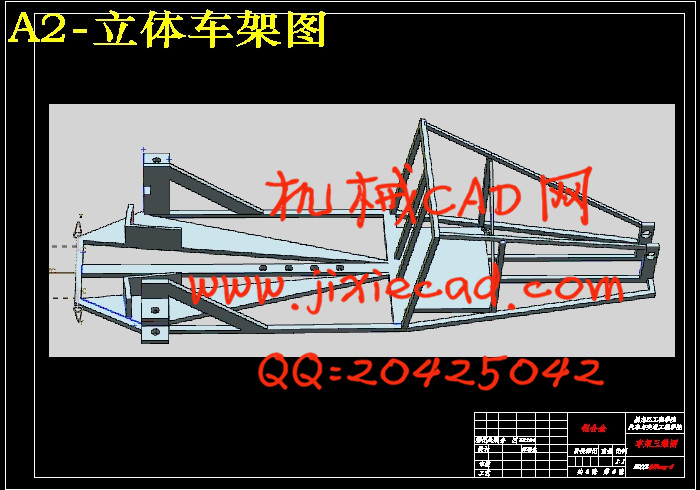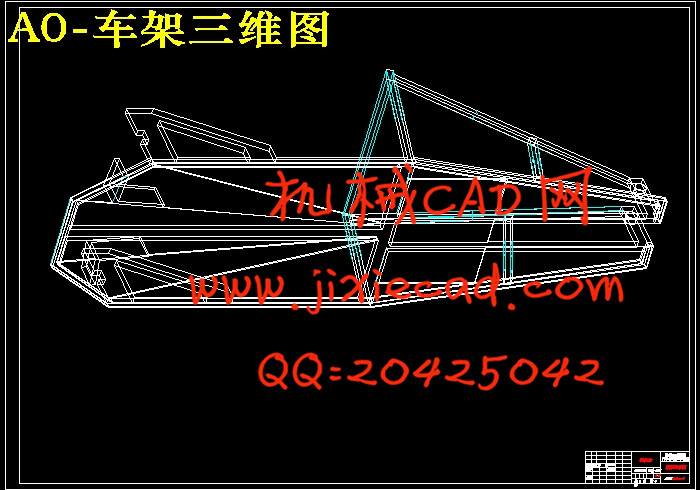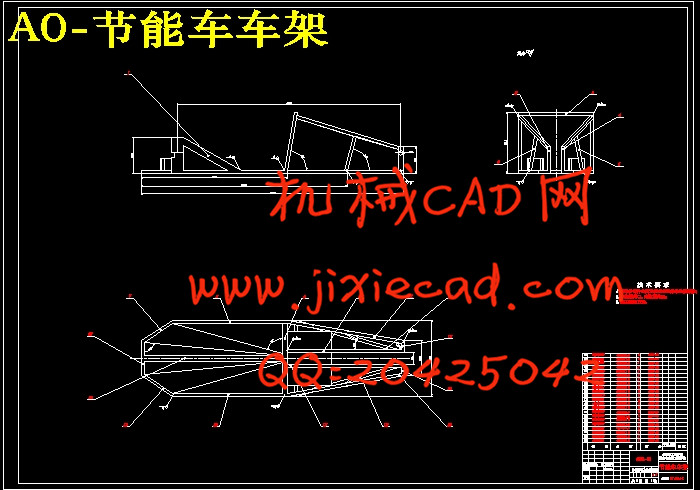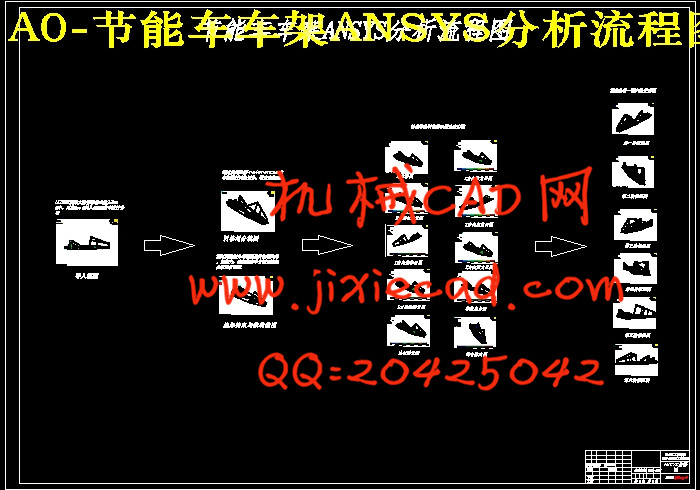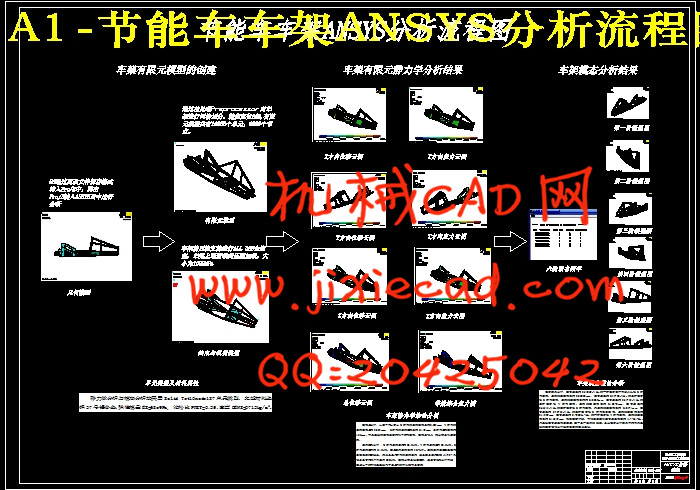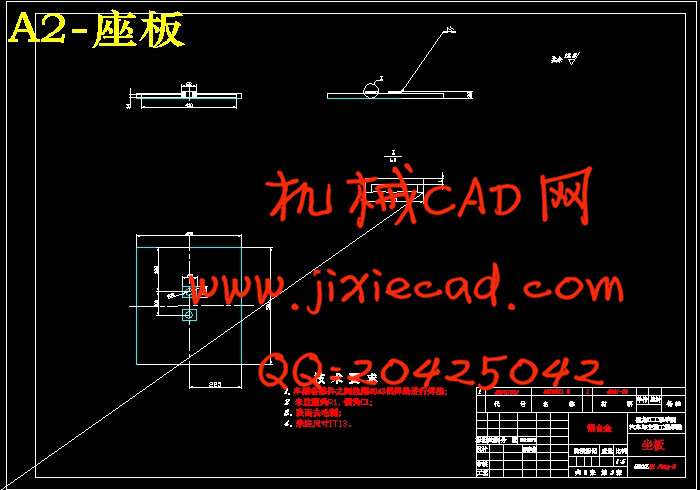设计简介
摘 要
汽车工业随着国民经济发展和交通运输体系的全面建立得到了飞速发展。汽车车架作为汽车总成的一部分,承受着来自道路和装载的各种复杂载荷作用,并且汽车上许多重要总成件都是以车架为载体,因而车架的强度和刚度在汽车总体设计中起到非常重要的作用,节能车架的轻量化设计有助于对节能车节能提高性能。本设计利用UG软件三维建模,有限元分析软件ANSYS对节能车车架进行绘制建模和分析研究。分别讨论该车架静态时在纯弯曲工况和扭转工况下的静强度分析,进行静态时的刚度分析;分析车架在弯曲工况、扭转工况、搓板路工况和紧急转弯情况下的静态动强度分析。预期分析,该车架的应力值小于材料的强度极限,是否满足设计的要求,是否强度偏大,比较经济性。本文还进行了车架的动态分析,主要是模态分析,它是结构动态设计的核心,克服了静态方法的局限性,强调从结构的整体考虑问题。通过对车架进行模态分析,设计中提出几种方案对车架进行了轻量化设计,优化的结果使得车架自身重量减少,节约原材料,降低生产的成本,提高汽车的燃油经济性,并且有利于环保。
关键词:节能车车架;有限元;静力学分析;模态分析;轻量化设计
Abstract
With the national economy and automobile transportation system has been the rapid development of fully established. Automobile frame assembly as part of a vehicle to withstand the load from the road and the various complex loads, and the cars are based on many important pieces of the frame assembly as the carrier, which frame the overall strength and stiffness in the car Design to a very important role to play, saving lightweight frame design helps improve performance of energy saving vehicles.The three-dimensional modeling software designed by UG, ANSYS finite element analysis software to draw on the energy-saving vehicle frame modeling and analysis. Discussion of the frame, respectively, in pure bending static conditions and to reverse the condition of the static strength analysis of the static stiffness analysis; analysis of frame conditions in bending, torsion condition, washboard road conditions and emergency situations turn static dynamic strength analysis. The results show that the stress of the frame is less than the ultimate strength of the material to meet the design requirements, but the intensity is too large, so the relatively poor economy. This frame also carried out a dynamic analysis, modal analysis are mainly, it is the core of the structure dynamic design overcomes the limitations of static methods, emphasizing the whole to consider the issue from the structure. By modal analysis frame, the design of several options put forward were a lightweight frame design and optimization of the result that the weight reduction of the frame itself, saving raw materials, lower production costs and improve vehicle fuel economy, and conducive to environmental protection.
Keywords:Energy saving vehicles;Finite element;Static analysis;Mmodal analysis;Lightweight design
目 录
Abstract II
第1章 绪 论 1
1.1选题的背景、研究目的及意义 1
1.2 节能车国内外研究现状 1
1.2.1节能车发展历程 1
1.2.2节能车国内外研究状况及结果 2
1.3研究内容及研究方法 5
1.3.1研究内容 5
1.3.2研究方法 5
第2章 节能车车架整体结构方案选定 7
2.1 节能车的工作原理与设计理念 7
2.1.1节能减排 7
2.1.3人人参与 7
2.2 节能车的主要结构方案确定 8
2.2.1节能车车架设计要求 8
2.2.2 节能车的整体结构形式及基本组成 11
2.2.3 节能车的各零部件之间的连接关系 13
2.2.4节能车架制作工艺分析 17
2.3 节能车车架的结构尺寸 19
2.3.1 节能车整体结构 19
2.3.2 节能车车架各部位的定位 20
2.4本章小结 21
第3章 节能车车架建模设计 22
3.1 基于UG软件三维建模 22
3.1.1 UG软件简介 22
3.1.2 节能车架三维建模 23
3.1.3 零配件三维建模 26
3.1.4 轻量化分析 27
3.2 车架装配 27
3.3干涉检查 28
3.4整体车架轻量化分析 28
3.5 本章小结 31
第4章 节能车车架参数分析 32
4.1 节能车重量计算 32
4.2 节能车车架建模 32
4.2.1 节能车车架力学建模与分析 33
4.2.2 节能车车架参数化建模与分析 33
4.3 节能车车架结构加强措施 36
4.4 本章小结 38
第5章 节能车车架轻量化分析 39
5.1 ANSYS有限元分析软件介绍 39
5.2 ANSYS与UG接口的建立 41
5.3节能车架静力学分析 42
5.4 节能车架模态分析 45
5.5 本章小结 49
结论 50
参考文献 51
致谢 53


